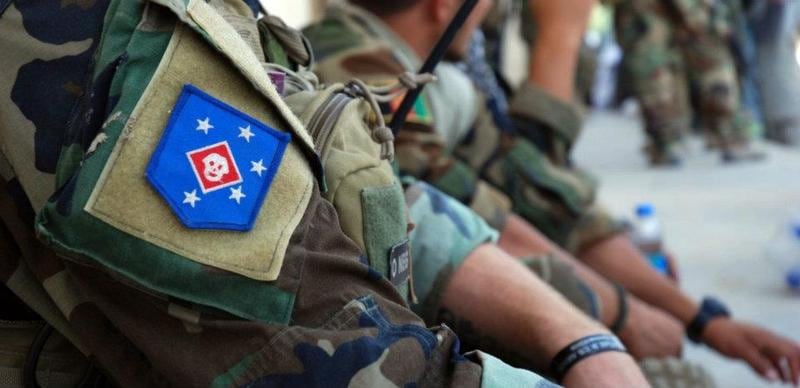CAMP LEJEUNE, N.C. — In the Raider Room at Marine Corps Forces Special Operations Command headquarters here, the focal point is unmistakable: the iconic World War II Raiders emblem on a banner, featuring a menacing skull surrounded by five stars arrayed in a "Southern Cross" on a midnight blue background.
But while MARSOC renamed its subordinate units for the Raiders in a much-anticipated move earlier this month, the command won't be adopting the famous skull logo, officials said. Maj. Gen. Joseph Osterman, MARSOC's commander, told reporters this decision was actually an acknowledgment of the Raiders' history and the multiple Marine units that can claim to be part of its lineage.
"Those Raider battalions had a very specific emblem that was associated with them," Osterman said. "There's a lineage aspect of that, and there's a legacy aspect of that ... so fFor MARSOC, it was really about taking on some pieces of that iconic emblem ... and things like that, but to make it different."
The legendary Raiders existed for a short, kinetic period between 1942 and 1944. During those years, the four Raider battalions conducted amphibious raids in the Asia-Pacific region as one of the first U.S. special operations contingents to fight in the war. They were later In January, the battalions were formally disbanded, and the battalions were re-purposed under 4th Marine Regiment. Those units remain active across the Marine Corps.
The Marines' reconnaissance battalions can also lay claim to the Raiders bloodline. Prior to MARSOC's activation, these elite recon units were the Marines' closest connection to the special operations world. When MARSOC was created in 2006, its first personnel came from 1st and 2nd Force Reconnaissance Companies, which were briefly deactivated due to a lack of manpower.
The Raiders influence can be seen in the insignias used by all these units. The 1st Battalion, 4th Marines emblem uses a version of the Raiders' Southern Cross, while the Marines' four reconnaissance battalions — three active and one Reserve — all feature an adaptation of the iconic skull.
"The lineage actually goes back to 4th Marines when they took apart the Raider battalions and made another Marine regiment and all that," Osterman said. "... So for our part, [we used] the commando knife and things like that, that they still used in World War II but we changed it just a little bit for being MARSOC rather than actually the Raider lineage."
All of MARSOC's eight subordinate Raider units now feature the Southern Cross in their unit emblem; most also feature the upward-facing stiletto knife used by the original Raiders in the Pacific.
For Karen Lovin, the granddaughter of 2nd Raider Battalion commander Evans Carlson and the president of the Marine Raider Association, the insignia is far less important than the spirit behind it.
"What was significant to the Raiders was not the emblem they wear on their sleeves but what they value, what they carry in their hearts," she said.
She said she had observed in MARSOC's active-duty Marines the same kind of intensive training, the same commitment to the mission, and even the same close relationship between officers and enlisted troops that she recognized from the original Raider units.
"These men aren't just warriors, they're peacekeepers and makers. It's emblematic of who and what the Raiders were," she said. "In every way, they're in lockstep with the Raiders."
Regardless of philosophy and lineage, however, MARSOC's Raiders will continue to sport the vintage skull patch, albeit in an unauthorized capacity. Though not formally approved for uniform use, MARSOC troops have made a habit of donning sporting the patch during deployments.
"That insignia is a source of pride and has been a source of pride," said Maj. Ed Norris, the commanding officers of 3rd Marine Raider Support Battalion. "It is something that Marines have identified with T-shirts, with hats, really just to honor the Marines that have gone before us. And now to officially have that is an honor."
Lovin said about a dozen MARSOC Marines had proudly showed her their Raiders patches. One gunnery sergeant, she said, told her he'd brought it with him on eight deployments in the last decade.
"The deep royal blue color of the patch had faded to almost a baby blue," she said. "So I know he had it out in the sun."





